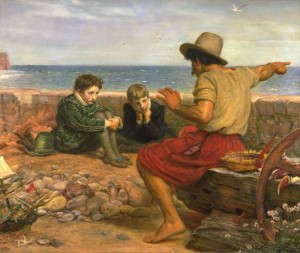In Medical Media Arts Lab, we have been encouraged over and over again to consolidate our research and design through the use of stories; so far we have produced storyboards for the problem as a whole and written multiple narratives from the perspective of our problem stakeholders. Before these exercises, I could not clearly see the benefits of storytelling, but I am now very aware of their effectiveness. Witnessing the power of storytelling, I began to cogitate on why they are so potent; With this blog post I’d like to explore some perspectives on the power of representing problems in the form of stories.
The IDEO Human-Centered Design Toolkit directly addresses and prescribes storytelling. Specifically, it recommends storytelling in the step right before materials/solutions are produced. One reason for the use of storytelling is that it the stories give real, human-centered ideas and solutions that are synthesized from research and thought:
“Telling stories is about transforming the stories we heard during research into data and information that we can use to inspire opportunities, ideas and solutions. Stories are framed around real people and their lives, not summaries of information.”
The other reason why they are proponents for this type of storytelling, is that they help solutions designers think in terms of specific events, rather than in general summaries:
“Stories are useful because they are accounts of specific events, not general statements. They provide us with concrete details that help us imagine solutions to particular problems.”
Another interesting perspective is that storytelling is fundamental to being human, and is necessary for human survival. Personally, I can see the motivation for this strain of thought; for me, stories grab my attention, foster empathy, and are easy to process cognitively. For instance, today I attended some presentations from electrical engineering researchers who were describing their ongoing research. It was no surprise to me that the presentations about an ongoing problem that were framed as stories were engaging and had me quite interested, while the other ones that framed the problem via a bland description of the problem had me feeling drowsy. It is the format of a story that somehow makes the problem come to life in a way that feels natural and is captivating.
Whatever the reason for storytelling, I am grateful to have had experiences this semester that have reinforced its strengths. It has helped me already in my classes, and will undoubtedly aid me in the future for problem solving and communication.

